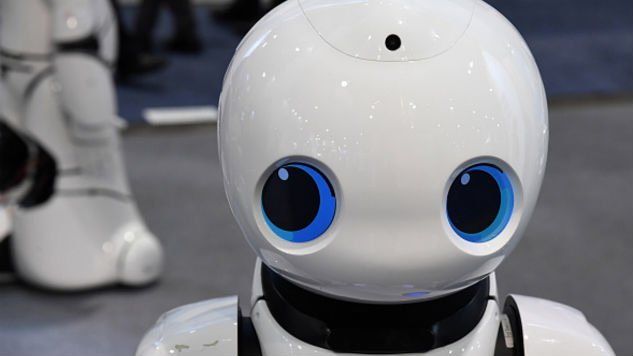
100 Years Together: How Robots Have Changed Our Lives
January 20, 2021January 2021 marks the 100th anniversary of the play "R.U.R." staged by Karel Čapek, which gave birth to the term "robot." IT and cultural experts reveal how modern robots have evolved and whether the writer's ideas regarding "artificial people" are similar to how machines are used today.
The main scene of the play "R.U.R." by Karel Čapek depicts a factory where "artificial people," named "robots" by the writer, are produced. It's thanks to the writer that the word "robot" came into use.
Today, humanity cannot imagine its life without "robots"—almost everyone owns a modern smartphone with built-in artificial intelligence technology, and many factories prefer machines to human labor. Robot vacuum cleaners are even standard in most well-off family homes, hotels, airports, and so on.
It should be noted that robots first appeared in cinematography long before the "real" world. Nevertheless, people still feared robots—a concern that in some continues to this day. But, we shouldn't, as realistically, our fear is not of the robot itself but of those who possess the technology to control the machine.
Regarding the development of modern technology, this fear surrounds matters concerning how humans and machines interact, including where morality comes into play.
We are afraid of the insensitivity and cruelty that evil robots embody.
"The robot was the perfect movie hero from the start. Like cinematography, it's an imitation of life, which has attracted for many years with its external spectacle. Like cinema, a robot is a reflection of a person" —Karel Čapek. Karel Čapek foresaw the concept of robots. Currently, many companies are actively producing humanoid devices while aiming to overcome the "sinister valley" effect so that human-made robots don't cause people to feel discomfort or fear.
Modern Robots in Action
Robots began to be used in different industries just over 50 years ago. The earliest industrial robots used in General Motors' production were the American Unimet and Versatran machines. At that time, the machines were a large manipulator, similar to a human hand that could grab things.
Today, technology has advanced far ahead, and robots have changed their appearance and been implemented into various areas of human life.
In the era of the pandemic, robotic nurses have become especially widespread. These devices are fighting the coronavirus. They perform various tasks, from disinfecting surfaces to consulting patients with the ability to communicate with doctors remotely.
There are also robotic administrators who can organize appointments with doctors, book hotel rooms, walk to the desired office, and even communicate. It's noteworthy that the robot can implement all of these processes independently without human assistance. The field of application for such machines is impressively wide—robot administrators could be installed in clinics, hotels, entertainment centers, and even government institutions.
Nowadays, dozens of software robots are used in commercial organizations. Robots are entrusted to close customer accounts, generate reports and statements, block cards, and more. They can perform a variety of tasks from placing orders for workbooks, analyzing the use of transport, keeping records of labor productivity, collecting and organizing data, verifying various documents, interacting with banks, and so on.
Therefore, it's apparent that robotic machines are, for the most part, beneficial and able to support humanity by helping people with tasks they could not otherwise complete, either due to physical or mental limitations. Robots should be regarded as "helpers" that we do not need to be afraid of. Instead, if we should fear anything, it should be the people who possess the means to control these machines, not the technology or robots themselves.
